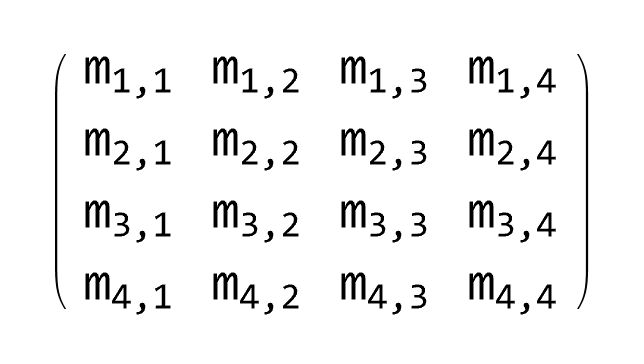Every m × n matrix A ∈ 𝔽m×n with entries from field 𝔽 (which is either ℤ, set of integers, or ℚ, set of rational numbers, or ℝ, set of real numbers, or ℂ, set of complex numbers) generate a linear transformation TA : 𝔽n×1 ⇾ 𝔽m×1 via matrix multiplication, 𝔽n×1 ∋ x ↦ A x ∈ 𝔽m×1.
Now we prove Lemma 1 analytically. Let x be any nonzero vector from 𝔽n×1, then \begin{align*} {\bf A}\,{\bf B}\,{\bf x} \ne 0 \quad &\Longrightarrow \quad {\bf B}\,{\bf x} \ne 0 \qquad \forall \mathbf{x} \in \mathbb{F}^{k\timesd 1} \\ &\Longrightarrow \quad {\bf A}\,{\bf y} \ne 0 \qquad \mbox{where } \mathbf{y} = \mathbf{B}\,{\bf x} \quad \forall \ \mathbf{x} \in \mathbb{F}^{k \times 1} , \\ &\Longrightarrow \quad {\bf A}\,{\bf y} \ne 0 \qquad \mbox{for all {\bf y} in the image of {\bf B}}. \end{align*}
Example 1: We consider two matrices \[ \mathbf{A} = \begin{bmatrix} 1&0&0 \\ 0&1&1 \\ 0&0&0 \\ 0&0&0 \end{bmatrix} \qquad \mbox{and} \qquad \mathbf{B} = \begin{bmatrix} 1&0 \\ 0&1 \\ 0&0 \end{bmatrix} . \] We determine their null spaces with Mathematica:
B = {{1, 0}, {0, 1}, {0, 0}};
NullSpace[A]
Matrix Rank

We assume that all matrix entries are from some field of scalars (either ℤ or ℚ or ℝ or ℂ). The space of all m-by-n matrices over field 𝔽 is denoted by 𝔽m×n.
- If rank of m × n matrix A is m, then A is said to be full-row rank.
- If rank of m × n matrix A is n, then A is said to be full-column rank.
If we take matrix M ∈ Mr ∩ E, then we can show, considering M + λJ \isin; Mr, that M = 0. Therefore, since \[ \dim \left( M_r + E \right) = \dim \left( M_r \right) + \dim \left( E \right) \leqslant \dim \left( \mathbb{R}^{n\times n} \right) = n^2 . \] So we get \[ \dim \left( M_r \right) \leqslant n^2 - n \left( n-r \right) = n\,r . \]
- Axler, Sheldon Jay (2015). Linear Algebra Done Right (3rd ed.). Springer. ISBN 978-3-319-11079-0.

